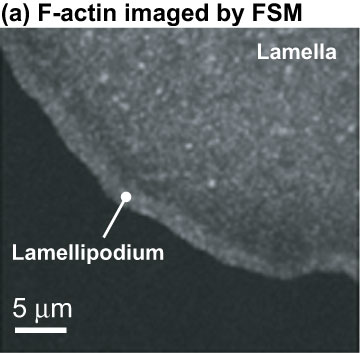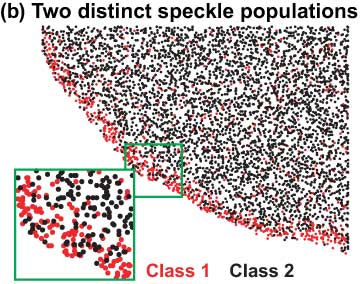
Fluorescent speckle microscopy, as shown in this image, is based on a method developed by Associate Professor Clare Waterman-Storer and her former boss E.D. Salmon. This recent technique helps to tease apart the mechanics of cell movement by tracing how the actin cytoskeleton undergoes continuous flow from the leading edge toward the cell body. Image by Aaron Ponti.
